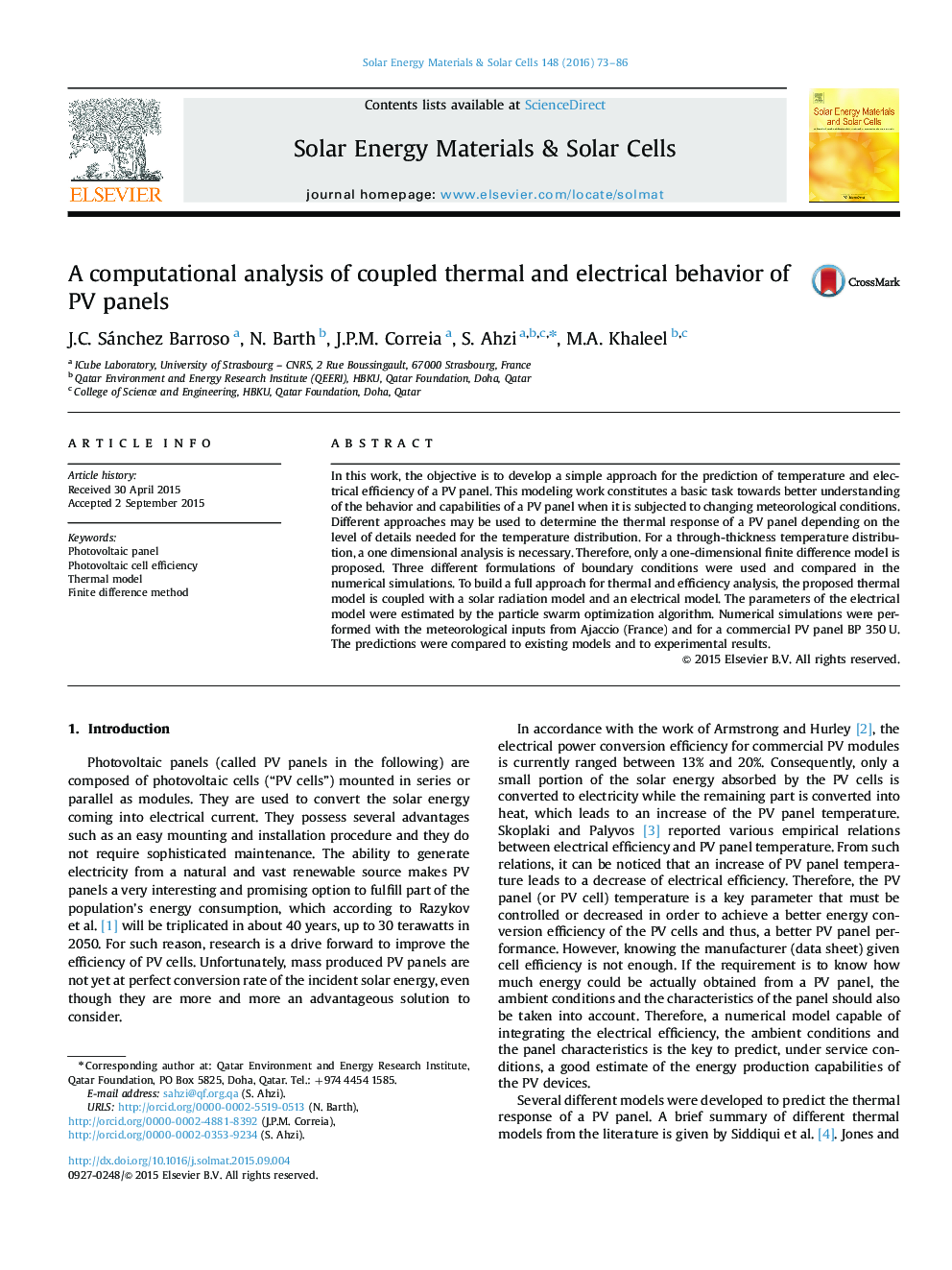| Article ID | Journal | Published Year | Pages | File Type |
|---|---|---|---|---|
| 77633 | Solar Energy Materials and Solar Cells | 2016 | 14 Pages |
•A one-dimensional finite difference model was built to simulate PV thermal response.•The proposed model comprises a solar irradiance, a thermal and an electrical model.•The proposed model can be used with any period of real-time atmospheric conditions.•The proposed approach is validated by experiments and 2D finite element simulations.
In this work, the objective is to develop a simple approach for the prediction of temperature and electrical efficiency of a PV panel. This modeling work constitutes a basic task towards better understanding of the behavior and capabilities of a PV panel when it is subjected to changing meteorological conditions. Different approaches may be used to determine the thermal response of a PV panel depending on the level of details needed for the temperature distribution. For a through-thickness temperature distribution, a one dimensional analysis is necessary. Therefore, only a one-dimensional finite difference model is proposed. Three different formulations of boundary conditions were used and compared in the numerical simulations. To build a full approach for thermal and efficiency analysis, the proposed thermal model is coupled with a solar radiation model and an electrical model. The parameters of the electrical model were estimated by the particle swarm optimization algorithm. Numerical simulations were performed with the meteorological inputs from Ajaccio (France) and for a commercial PV panel BP 350 U. The predictions were compared to existing models and to experimental results.
